This one email has made a Sumo customer $3,522,519.75 in sales:
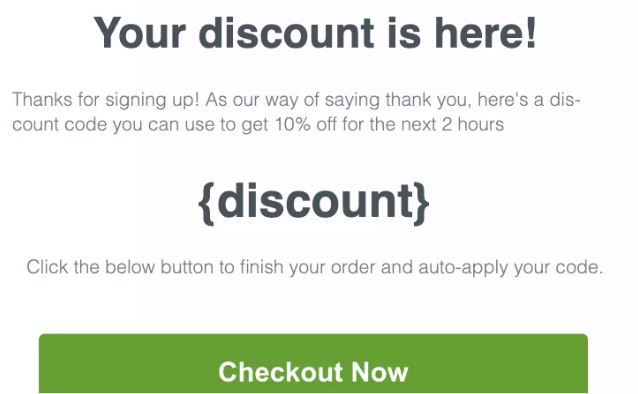
Because the email campaign is automated, it keeps making sales on autopilot every day:

If they had to manually write and send the 21,681 emails (pictured below) to the people who opted in for their abandoned cart offer, they never would have been able to make this much revenue.

Thankfully, they had email marketing automation, allowing them to write an email once and send it out automatically at just the right moment.
Want to learn how it works?
%(tableofcontents)
What Is Email Automation?
An automated email campaign is a type of email that’s set up once and sent to recipients automatically, based on triggers like time, day, or user actions on your website.
For example, let’s say your business is an online coffee store, you might have automated email campaigns set up for:
-
Welcoming new customers.

-
Recommending products based on previous purchases.
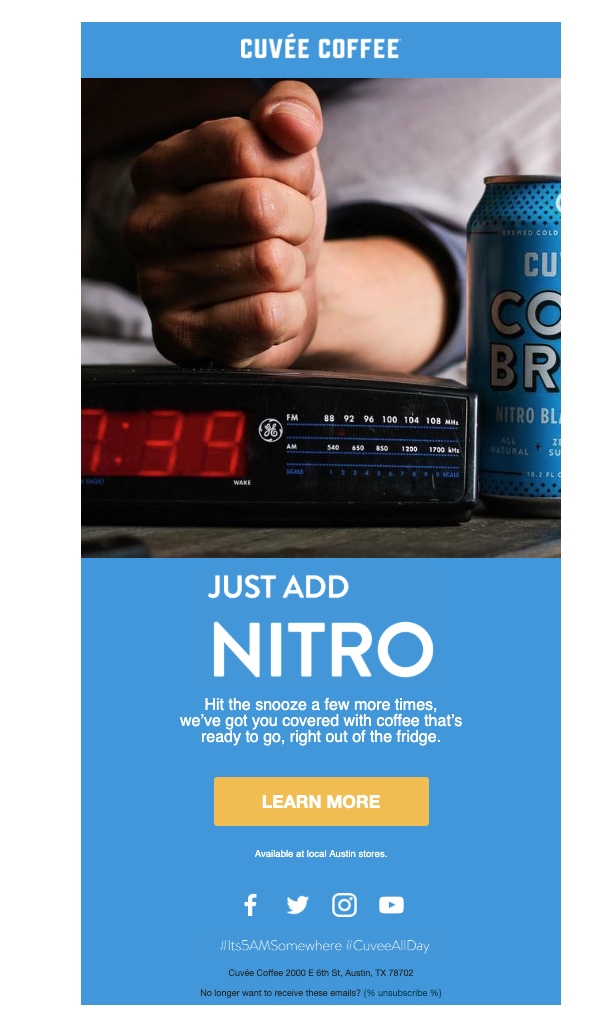
-
Sharing the coffee experience after purchase.

You don’t want to have to email every new customer after they make a purchase, right? Queueing each of these emails manually — like you might with newsletters and one-off campaigns — would be a massive waste of time.
So creating an automated message means you can hit each new customer’s inbox directly after they make a purchase.
And the best bit… you only have to set up the email once and it will automatically send every time a predefined trigger is set off.
But it’s not just productivity impacted by email automation — automation can help you deliver timely emails that increase customer loyalty, boost sales, and more.
How Email Automation Can Help Your Business
If you’re going to invest time and money in creating email automation, and buy tools to help you, it’s important to understand exactly how email marketing automation will benefit your business.
Whether you’re a freelancer wondering about ROI or a marketer trying to convince your boss you NEED to invest in automation, here are some benefits of email automation you need to know:
Boost Revenue
Abandoned Cart Emails
Nearly 70% of shopping carts have been abandoned before checkout was completed.[*]
That’s a LOT of revenue lost — literally at the click of a button.
But once a cart is abandoned, that doesn't have to be the end of the story. Cart abandonment emails are a great way to claw back lost revenue.
Here’s an example from Huckberry (note how it offers free shipping as an incentive to complete the purchase):
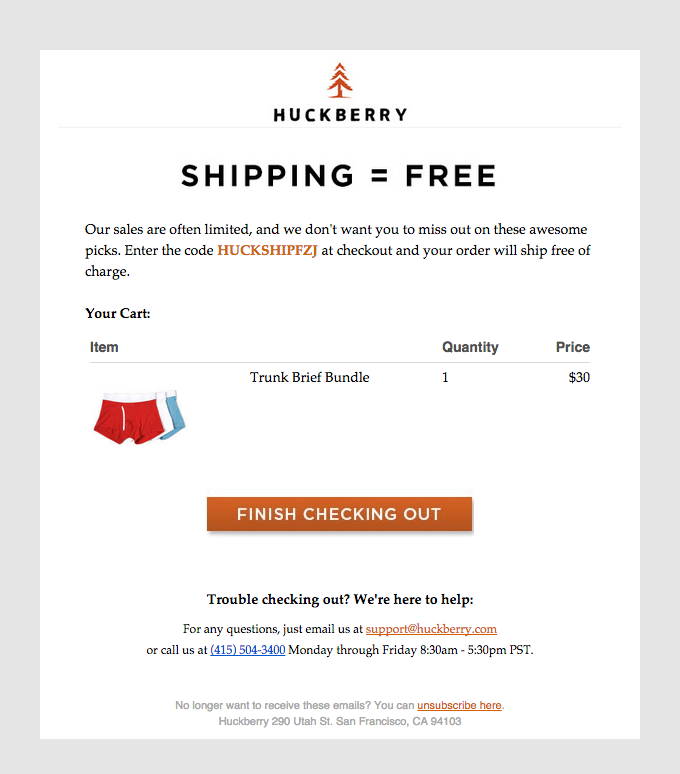
Data from Business Insider suggests that worldwide, $2.75 TRILLION in lost revenue is recoverable — that’s around 60%.[*]
Recovering 60% of cart abandonments might seem a little unrealistic for most businesses.
But the truth is, recovering just 1-5% can have a huge impact on your profits.
For example, check out the ecommerce business in the video below. It’s losing 2,300 sales per month to cart abandonment, which equals more than $220k in lost revenue — recovering 5% of these sales would bring in ~$10k extra per month!
Want to work out the impact that lost sales is having on your business? We’ve put together a free Ecommerce Cart Abandonment Calculator.

Once you work out how much you’re losing, you can start sending automated abandoned cart emails using Sumo’s email marketing tools.
Recommended Product Emails
Repeat customers are the life and soul of most businesses and it’s much more cost-effective to retain customers than acquire new ones.
As Amy Gallo wrote in HBR:[*]
Depending on which study you believe, and what industry you’re in, acquiring a new customer is anywhere from five to 25 times more expensive than retaining an existing one.
One of the best ways to ensure your customers keep coming back is to send them personalized emails with product recommendations.
Amazon does this incredibly well. Here’s an email I received, based on previous book purchases:

Because Amazon has data on my purchase history, it can make calculated predictions on what I might also like based on books similar to what I’ve already bought.
Increase Brand Loyalty
We’ve already mentioned the cost of keeping a customer versus acquiring a new one. If you want fewer one-and-done customers, you’ll need to focus on creating brand loyalty.
Sales or signups should just be the beginning of your relationships with customers — and email automation can play a huge part in creating loyal, lucrative customers.
Here are a few automated emails you should be sending.
Welcome Emails
Welcome emails are a golden opportunity to build closer relationships with new customers.
Why? Well, for starters, they have incredibly high open rates — up to 80% — and click through rates of 25%.[*]
So if you want to help your customers get to know your brand a little better, you probably won’t have a bigger opportunity than your welcome email.
Here’s how Beardbrand welcomes new customers:

I really love this email for many reasons:
-
It shows the Beardbrand team and lets you get to know the people behind the business.
-
It comes directly from the founder making you feel important.
-
The copy is written in a fun and playful way, in line with the company’s brand.
Product Consumption Emails
Once someone has bought your product, you want them to get the most out of it.
Whether it’s a piece of software, like Sumo, or a product, like a coffee filter, educating your new customers on how to best use their new purchase is an essential step to creating happy, loyal customers.
Sometimes this is as simple as sending over some educational content, like SEO tool Ahrefs.
Ten days after a new customer signs up to its product, Ahrefs' Head of Marketing, Tim Soulo, sends an automated email giving customers links to their best SEO content:
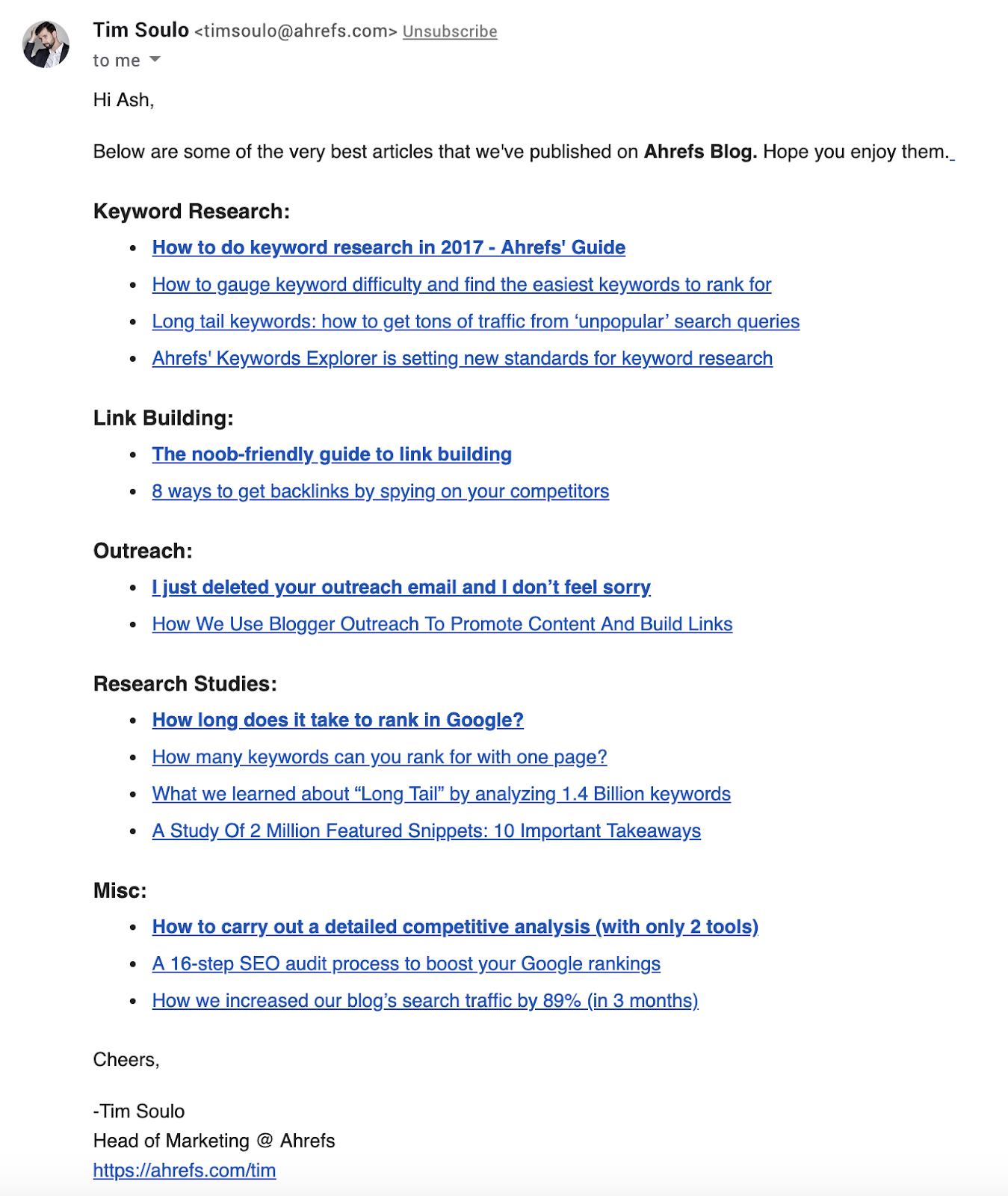
Many articles linked to from this email also feature Ahrefs’ product, helping new customers get to grips with it and get the most out of its features:
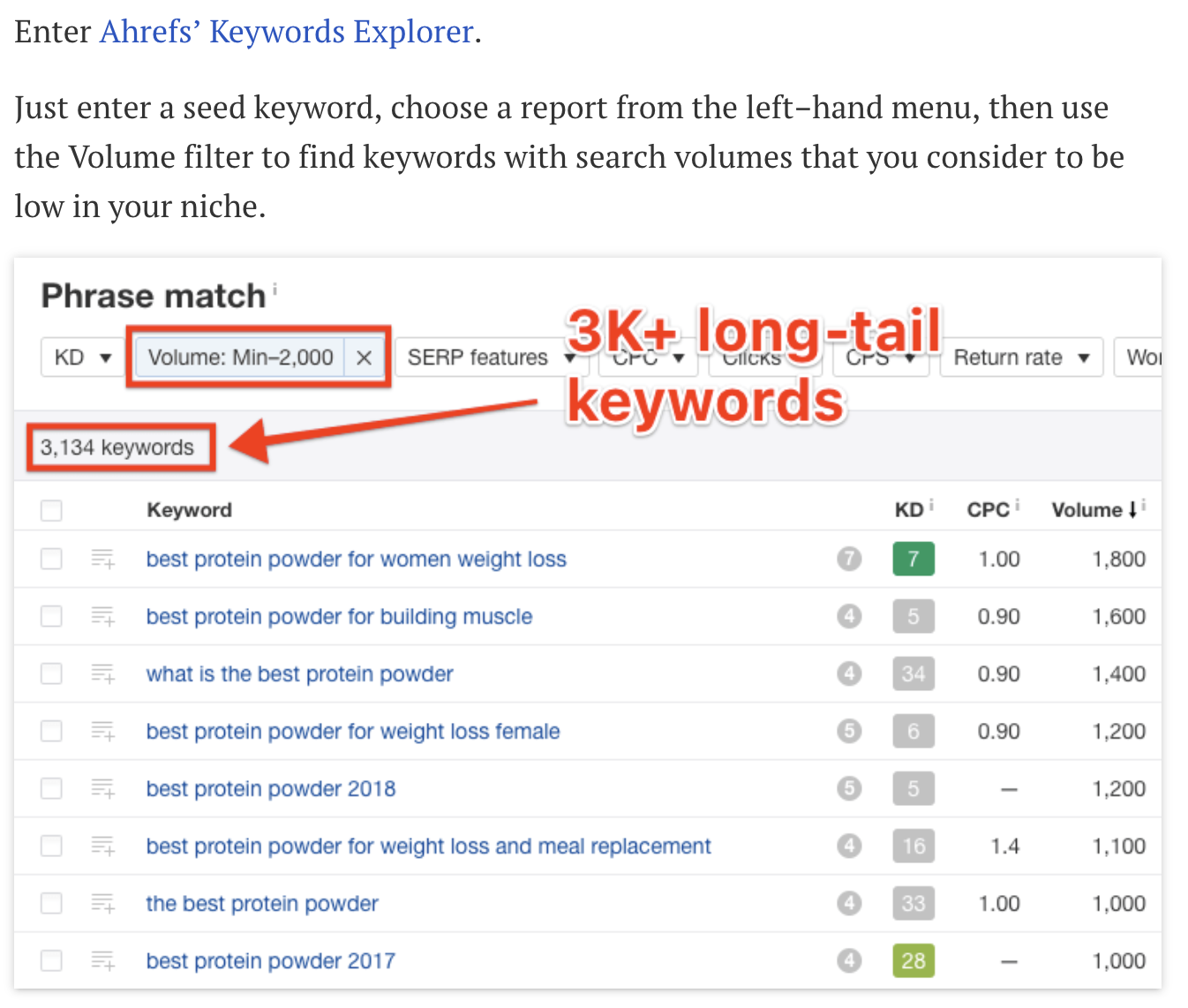
Twist, a team communication app, also sends out automated emails to new customers helping them to get the most out of the product:
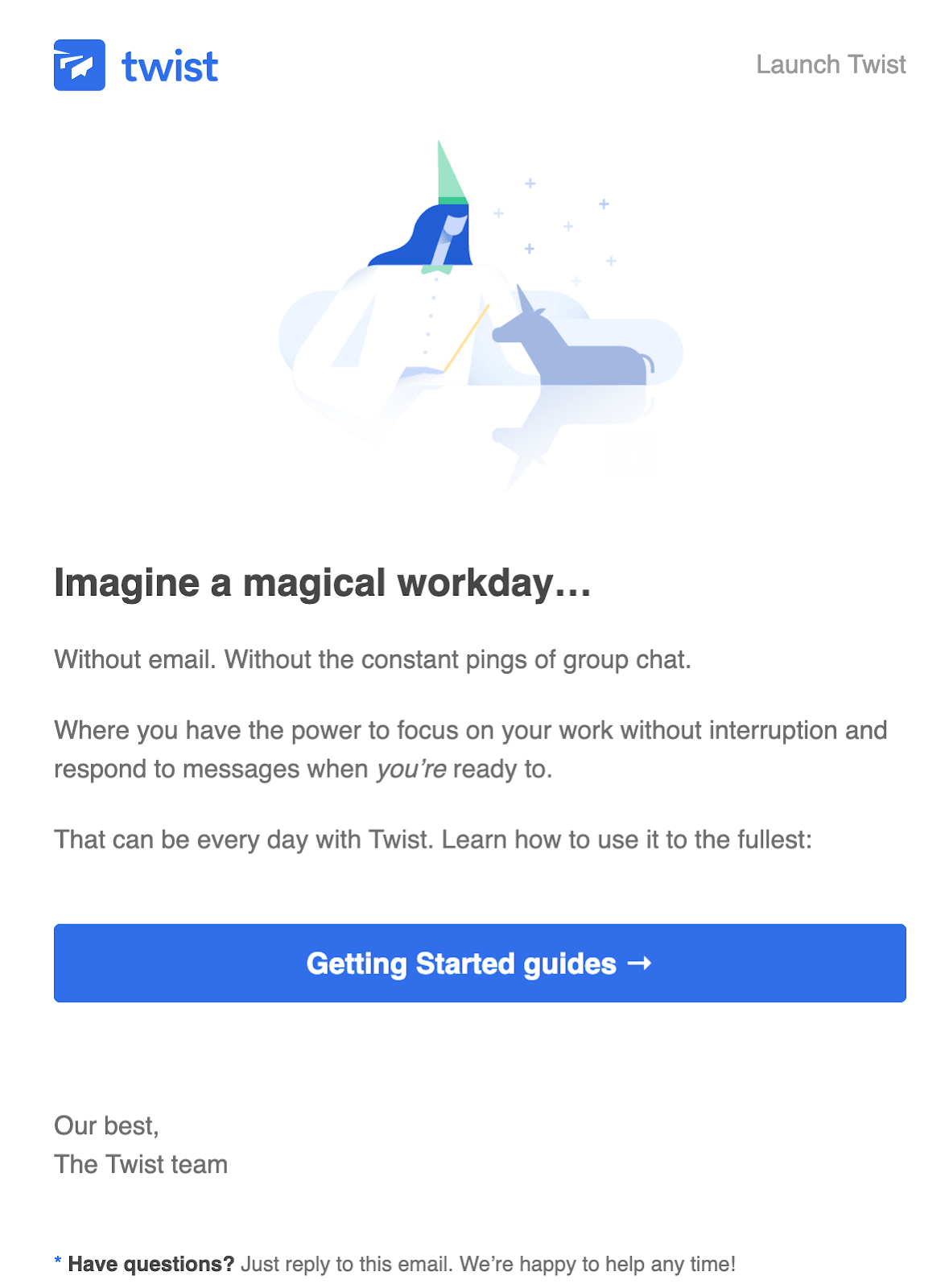
Re-Engage Lapsed Customers
Just because someone hasn’t made a purchase for a while, doesn't mean they no longer like your brand. They’re probably busy with other things.
If you haven't seen a customer recently, or they haven’t opened your latest email campaigns, you can set up automated re-engagement campaigns to bring them back.
Reactivation Emails
Reactivation emails can be sent based on criteria such as time since last purchase or time since they last opened one of your regular email newsletters.
For example, Myprotein sends out reactivation emails to customers who haven’t made a purchase lately. This message was sent around nine months after a previous purchase:
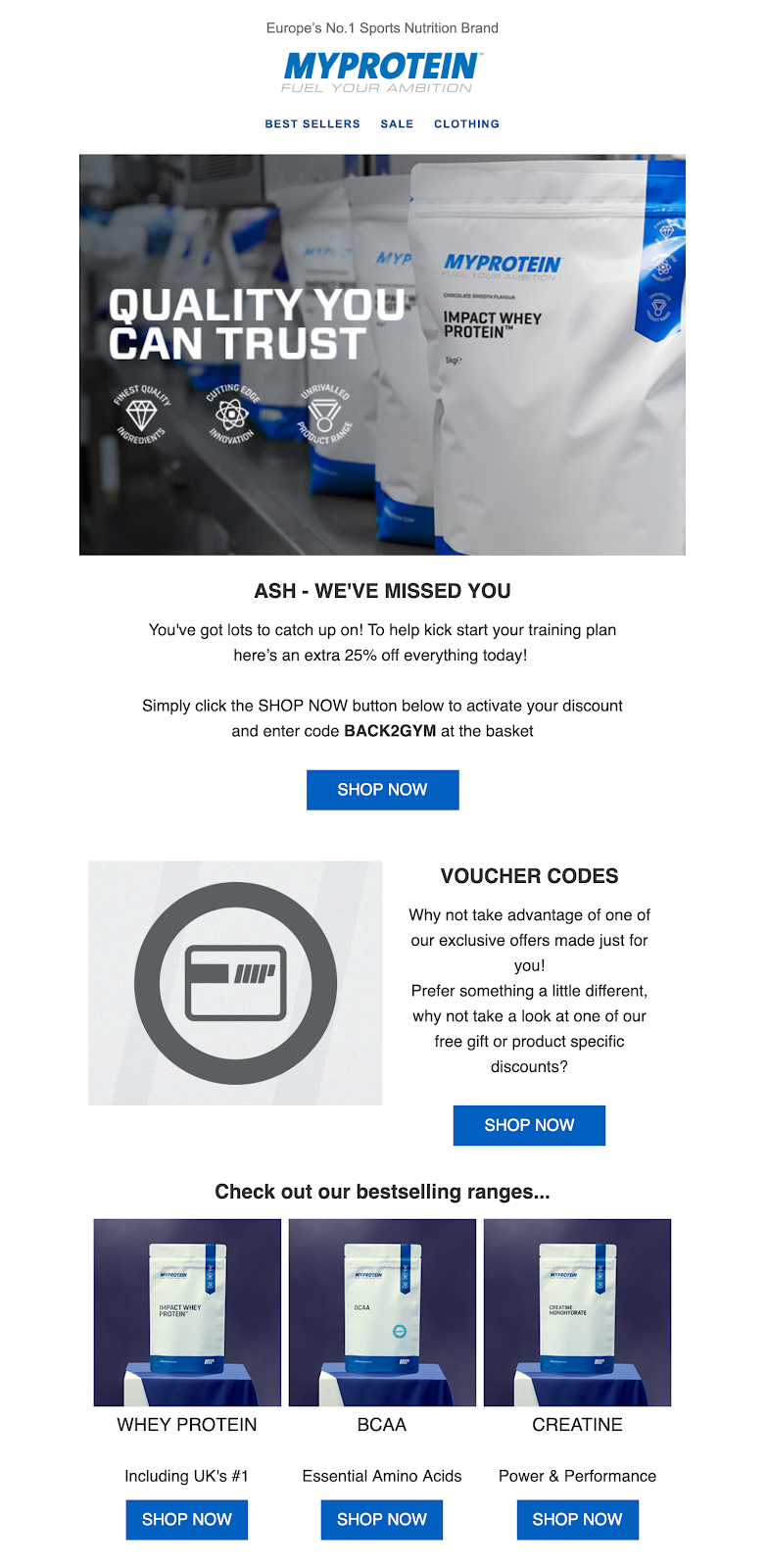
The email showcases some of Myprotein’s best-selling products and includes a discount code to encourage action from the recipient.
Two Types Of Email Automation
There are two main types of email marketing automation that businesses use:
-
Trigger-based automation.
-
Drip campaigns.
Below I’ll share the differences between the two.
Trigger-Based Automation
Trigger emails are sent based on user actions (or triggers). This means you can tailor them to be super specific based on customer behaviors such as:
-
Making a purchase.
-
Abandoning a cart.
-
Milestones (birthdays, repeat purchases, customer anniversaries).
You can get as creative as possible with these emails. Just remember if you’re setting up a trigger-based automation, it MUST add value to your customers.
For example:
-
An automation one month after a first purchase that offers free shipping on a second purchase provides value to the customer (free shipping). ✅
-
An automation simply saying “Come back and make a second purchase” doesn’t offer much of an incentive. ❌
Always think about the benefit to your customers before you set up an automation.
Drip Campaigns
Drip campaigns deliver sequential emails to customers based on a certain trigger.
Usually drip campaigns are triggered by intentional user actions like signing up to your product, making a purchase or joining your email list.
Below is an example of a drip campaign Snowy Joey sends.[*]
First someone opts in to get their snow cone syrups pricing sheet on this landing page from a Google ad:[*]
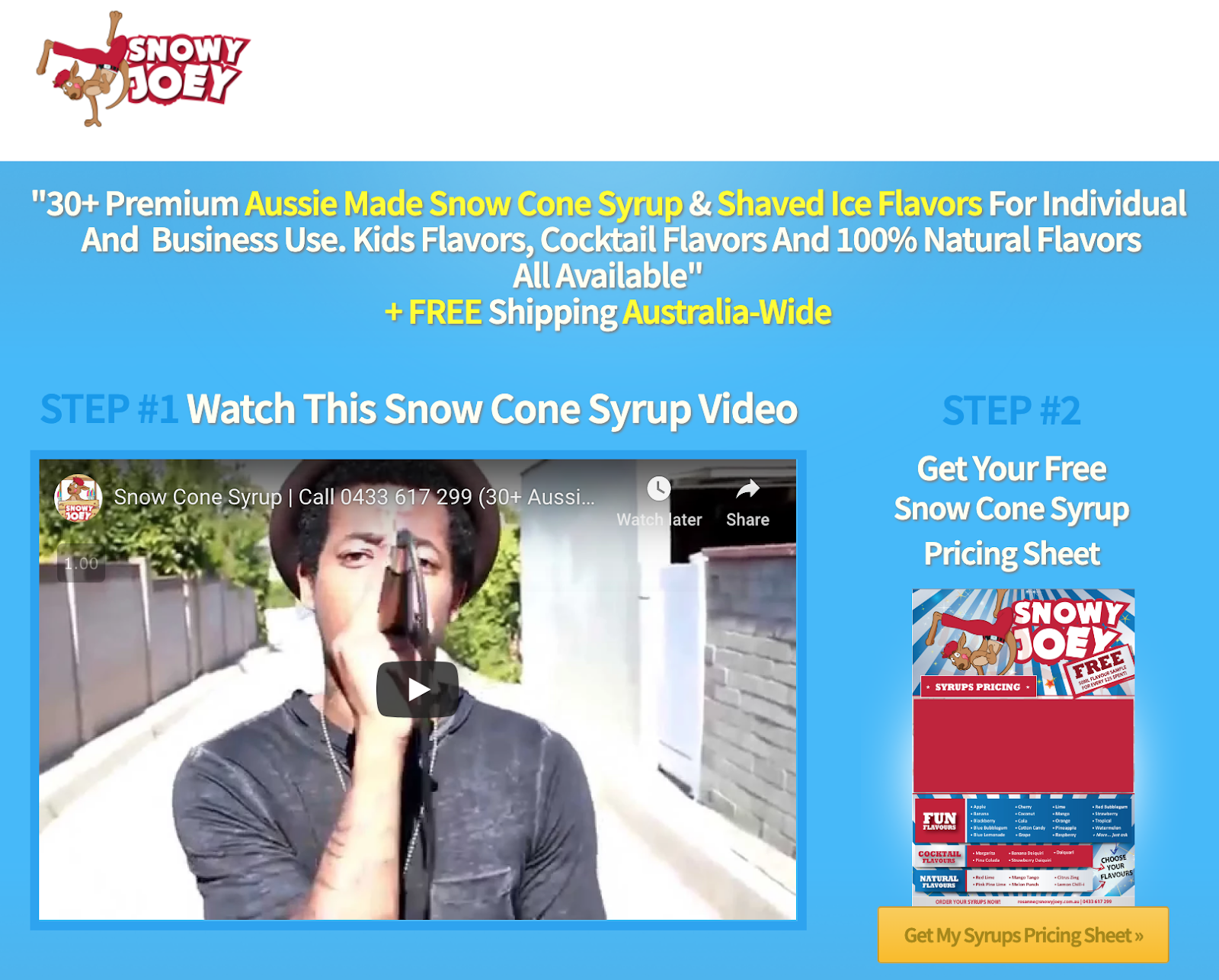
Second, this drip campaign is triggered:
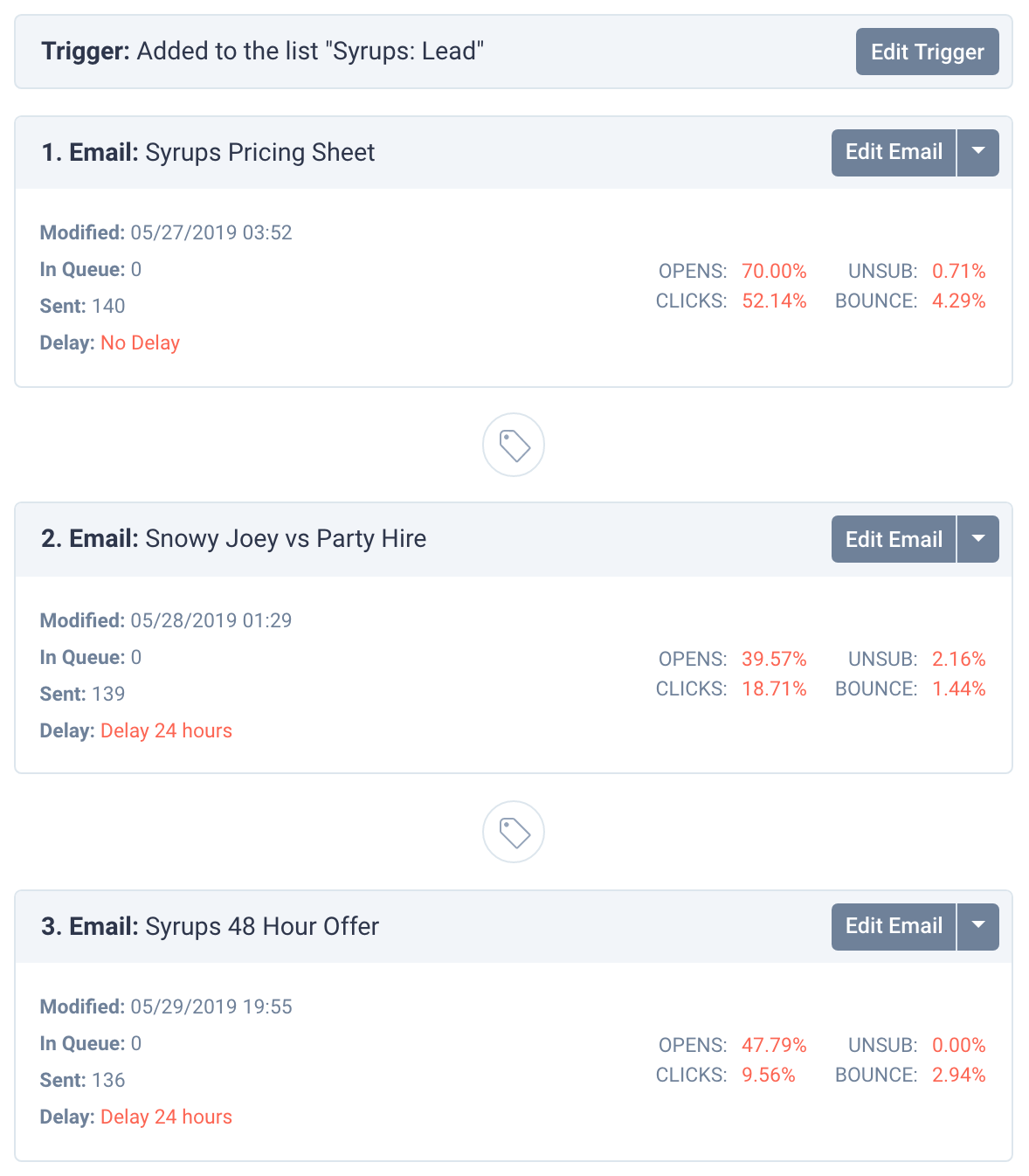
As another example, a drip campaign for a webinar subscriber could look like this:
-
Day 1: Thanks for signing up
-
Day 2: Here’s what to expect in our webinar
-
Day 7: Are you still joining tomorrow?
-
Day 8: We’re going live, here’s the link
You can also create drip campaigns that alter based on user actions.
For example, if your goal is to book sales meetings for your sales reps, you might set up a drip campaign like this one by InsightSquared:[*]
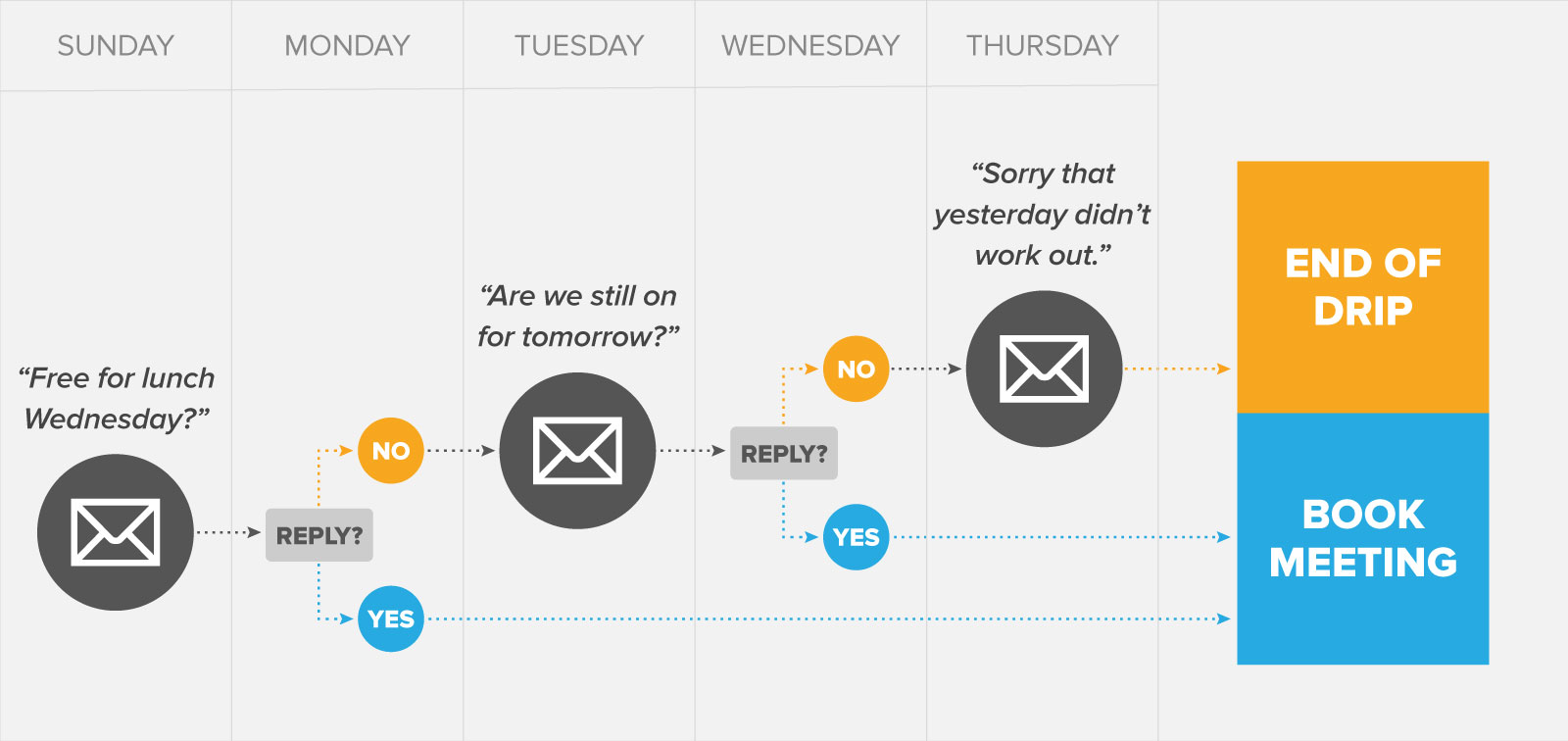
A drip campaign like the one above can be triggered when someone downloads a lead magnet to get a new lead on a sales call.
For more context on how drip campaigns work, here’s Sumo writer Bill Widmer walking us through how to set up an email automation sequence:
Email Automation Metrics
As with any form of marketing, you need to pay close attention to the data to assess whether your email automation is performing optimally and spot opportunities for improvement.
Every automation will likely have different goals and your KPIs will vary based on said goals, but in general, you’ll want to pay close attention to:
Open Rates
The Open Rate is a measure of how many people on your email list actually opened your message. It tends to be calculated by dividing the number of emails opened by the total number of emails sent, and is usually displayed as a percentage.
For example: If you sent 1,000 emails and 400 are opened, you’d have an open rate of 40%.
Two ways to improve open rate performance:
-
Your subject line: If your subject doesn’t hit the right spot, your emails won’t be opened. Need some inspiration? Check out our 87 irresistible subject lines here.
-
Timing: Have a look at when your emails are being sent. It could be that they’re arriving in customer’s inboxes in the middle of the night, or they’re being sent on weekends when people might not be in their inboxes so much.
Click Rates
Similar to Open Rates, Click Rates tell you the number of people who clicked a link within your email.
This metric is incredibly important because if you’re sending emails, you usually want the recipients to take some kind of action:
-
Visiting your store.
-
Completing a purchase.
-
Reading your latest blog post.
And in these cases, if people aren't clicking, your emails are failing.
How to improve click rate performance:
-
Change the copy: Maybe your CTA copy isn’t screaming “Click Me.” One of the simplest ways to boost your click rate is to experiment with new, irresistible copy. Sometimes it can be as simple as changing a CTA from “Visit Store” to “Show Me More.”
-
Play with buttons and colors: People ignoring your text links? Why not try a big, unmissable button in your email. And if you want it to stand out more, use a contrasting or bright color.
Conversions
A conversion is a subscriber who completes the desired action from your email. Conversions will change based on the goals and desired outcomes of each email:
-
For an abandoned cart email, a conversion would be completing the purchase.
-
With a sales email, a conversion might be clicking through to your landing page.
-
If you’re seeking product feedback, a conversion could be leaving a review on your website or replying to your email.
How to improve conversions performance: If subpar conversions are giving you a headache, you could try:
-
Rewriting the copy: Copy is probably the most important part of any email. Without great copy, you won’t achieve your goals. Try making your copy short, clear and to-the-point. Want someone to go back to the checkout and complete a purchase? Tell them.
-
Making the CTA clearer: Sometimes CTAs can get lost in the jungle of headlines, copy, subheadings, images, prices, offers, etc. Whatever your goal, ensure the CTA is clear and impossible to miss.
Get Inspiration To Create Your First Email Automation
So that’s an introduction to email marketing automation complete.
Email automation will save you countless hours of work and help to improve your bottom line.
But we won’t just leave you there.
Want to see how some of the worlds most successful brands use automated emails to grow their business?
Add A Comment
VIEW THE COMMENTS